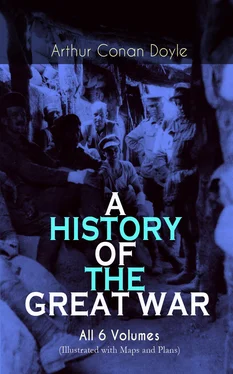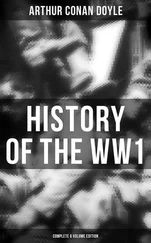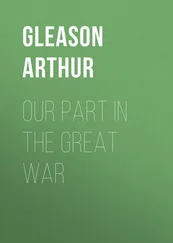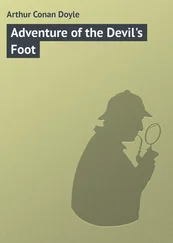In the Vailly region the 5th Cavalry Brigade found itself in a difficult position, for it had crossed the stream as a mounted unit in expectation of a pursuit, and now found itself under heavy fire in the village of Vailly with no possibility of getting forward. The only alternative was to recross the river by the single narrow bridge, which was done at a later date under very heavy fire, the troopers leading their horses over in single file. This difficult operation was superintended by Captain Wright of the Engineers, the same brave officer who had endeavoured to blow up the bridge at Mons. Unhappily, he was mortally wounded on this occasion. On the afternoon of the 14th—it being found that the British artillery was shelling our own advanced trenches—Staff-Captain Harter of the 9th Brigade galloped across the bridge and informed the gunners as to the true position.
Towards evening, in spite of the fact that there were no reserves and that all the troops had endured heavy losses and great fatigue, a general advance was ordered in the hope of gaining the high ground of the Chemin-des-Dames before night. It was nearly sunset when the orders were given, and the troops responded gallantly to the call, though many of them had been in action since daybreak. The fire, however, was very heavy, and no great progress could be made. The First Division gained some ground, but was brought to a standstill. The only brigade which made good headway was Haking’s 5th, which reached the crest of the hill in the neighbourhood of Tilleul-de-Courtecon. General Haking sent out scouts, and finding German outposts upon both his flanks, he withdrew under cover of darkness.
Thus ended the sharp and indecisive action of September 14, the Germans holding their ground, but being in turn unable to drive back the Allies, who maintained their position and opposed an impassable obstacle to the renewed advance upon Paris. The battle was marked by the common features of advance, arrest, and entrenchment, which occurred not only in the British front, but in that of the French armies upon either flank. When the action ceased, the 1st Northamptons and the 1st Queen’s, sent to guard the pressure point at the extreme right of the line, had actually reached the Chemin-des-Dames, the British objective, and had dug themselves in upon the edge of it. From this very advanced spot the British line extended diagonally across the hillside for many miles until it reached the river. Several hundred prisoners and some guns were taken in the course of the fighting. When one considers the predominant position of the Germans, and that their artillery was able to give them constant assistance, whereas that of the British and French was only brought up with the utmost difficulty, we can only marvel that the infantry were able to win and to hold the ground.
The next day, September 15, was spent for the most part in making good the position gained and deepening the trenches to get some protection from the ever-growing artillery fire, which was the more intense as the great siege guns from Maubeuge were upon this day, for the first time, brought into action. At first the terrific explosions of these shells, the largest by far which had ever been brought into an actual line of battle, were exceedingly alarming, but after a time it became realised that, however omnipotent they might be against iron or concrete, they were comparatively harmless in soft soil, where their enormous excavations were soon used as convenient ready-made rifle-pits by the soldiers. This heavy fire led to a deepening of the trenches, which necessitated a general levy of picks and shovels from the country round, for a large portion of such equipment had been lost in the first week of the campaign.
Only two active movements were made in the course of the day, one being that Hamilton’s Third Division advanced once more towards Aizy and established itself a mile or more to the north in a better tactical position. The 7th Brigade suffered considerable casualties in this change, including Colonel Hasted, of the 1st Wilts. The other was that Ferguson’s Fifth Division fell back from Chivres, where it was exposed to a cross fire, and made its lines along the river bank, whence the Germans were never able to drive it, although they were only four Aisne. hundred yards away in a position which was high above it. For the rest, it was a day of navvy’s toil, though the men worked alternately with rifle and with pick, for there were continual German advances which withered away before the volleys which greeted them. By the 16th the position was fairly secure, and on the same day a welcome reinforcement arrived in the shape of the Sixth Division, forming the missing half of Pulteney’s Third Corps.
Its composition is here appended:
| DIVISION VI.—GENERAL KEIR |
| 16th Infantry Brigade—General Ing. Williams.1st East Kent. 1st Leicester. 1st Shropshire Light Infantry. 2nd York and Lancaster. 11th Infantry Brigade—General Walter Doran.1st Royal Fusiliers. 1st N. Stafford. 2nd Leinsters. 3rd Rifle Brigade. 1 8th Infantry Brigade—General Congreve, V.C.1st W. York. 1st E. York. 2nd Notts and Derby (Sherwood Foresters). 2nd Durham Light Infantry. Artillery.2nd Brig. 21, 42, 63. 12th Brig. 43, 86, 87. 24th Brig. 110, 11], 112. 38th Brig. 24, 34, 72. R.G.A. 24. |
This division was kept in reserve upon the south side of the river. The French Commander-in-Chief had intimated that he intended to throw in reinforcements upon the left of the Sixth French Army, and so, as he hoped, to turn the German right. It was determined, therefore, that there should be no attempt at a British advance, but that the Allies should be content with holding the enemy to his positions. The two armies lay facing each other, therefore, at an average distance of about five hundred yards. The pressure was still most severe upon the 2nd Brigade on the extreme right. Bulfin’s orders were to hold on at all costs, as he was the pivot of the whole line. He and his men responded nobly to the responsibility, although both they and their neighbours of Maxse’s 1st Brigade had sustained a loss of over 1000 men each upon the 14th—25 per cent of their number. The shell-fire was incessant and from several converging directions. German infantry attacks were constant by night and by day, and the undrained trenches were deep in water. The men lay without overcoats and drenched to the skin, for the rain was incessant. Yet the sixth day found them on the exact ground upon which they had thrown their weary bodies after their attack. Nations desire from time to time to be reassured as to their own virility. Neither in endurance nor in courage have the British departed from the traditions of their ancestors. The unending strain of the trenches reached the limits of human resistance. But the line was always held.
On September 16 occurred an incident which may be taken as typical of the difference in the spirit with which the British and the Germans make war. Close to the lines of the Guards a barn which contained fifty wounded Germans was ignited by the enemy’s shells. Under a terrific fire a rescue party rushed forward and got the unfortunate men to a place of safety.
Several of the British lost their lives in this exploit, including Dr. Huggan, the Scottish International footballer. The Germans mock at our respect for sport, and yet this is the type of man that sport breeds, and it is the want of them in their own ranks which will stand for ever between us.
September 17 was a day of incessant attacks upon the right of the line, continually repulsed and yet continually renewed. One can well sympathise with the feelings of the German commanders who, looking down from their heights, saw the British line in a most dangerous strategical position, overmatched by their artillery, with a deep river in their rear, and yet were unable to take advantage of it because of their failure to carry the one shallow line of extemporised trenches. Naturally, they came again and again, by night and by day, with admirable perseverance and daring to the attack, but were always forced to admit that nothing can be done against the magazine rifle in hands which know how to use it. They tried here and they tried there, these constant sudden outpourings of cheering, hurrying, grey-clad men. They were natural tactics, but expensive ones, for every new attack left a fresh fringe of stricken men in front of the British lines.
Читать дальше












